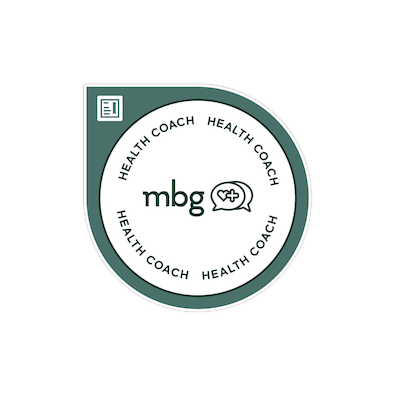Today we’re going to talk about Organic food in the United States, since every country has different requirements for the label “organic.”
First off, let’s go to the VERY basics: what is the official definition of organic?
There are words that are protected and regulated, and words that are not.
Organic actually IS protected and regulated by the National Organic Program (the NOP), which falls under the US Department of Agriculture or USDA’s jurisdiction. Typically, the USDA is responsible for the safety of meat, poultry, and egg products, while the FDA regulates all other foods. But when it comes to organic foods, their certified organic status is regulated by the UDSA, while they still have to meet the typical safety standards of the FDA.
So let’s dive into what this label actually means for you.
Organic production, as defined by the USDA, is a system that is managed to respond to site-specific conditions by integrating cultural, biological, and mechanical practices that foster cycling of resources, promote ecological balance, and conserve biodiversity.
Super simple, right?
To be honest, the Organic label seems to suffer from a lack of communication of what that label entails AND a lack of understanding on the side of consumers.
This lack of clarity about what certified organic really means is a HUGE issue, and one that I hope to clear up for you today.
According to Organic Produce Network from a 2019 report from Mintel group Limited, just 26% of US Consumers say they trust the organic label. (4 – Source)
Organic vs Natural
Some common misconceptions are that organic just means that it is an organic item – as in, it’s from the earth. So the thinking here would be that ALL bananas are organic, for example.
What’s interesting is that this is more often the meaning of the word “natural,” which is an unregulated term. Neither the USDA nor the the US Food and Drug Administration (the FDA) regulates the term natural.
From the FDA.gov website “Although the FDA has not engaged in rulemaking to establish a formal definition for the term “natural,” we do have a longstanding policy concerning the use of “natural” in human food labeling. The FDA has considered the term “natural” to mean that nothing artificial or synthetic (including all color additives regardless of source) has been included in, or has been added to, a food that would not normally be expected to be in that food.”
According to a report from the FDA, prior to 1990, the FDA did not try to restrict use of the term “natural,” except for added color, synthetic substances, and flavors. (6 – source).
This September 2019 report promised an updated definition of the term “natural,” and what that means for consumers, but unfortunately, as of April 2022, that update still hasn’t happened yet.
What this means is that “natural” doesn’t actually mean much. In fact, animals raised with antibiotics can fall under the “natural” label, as can High fructose corn syrup. (7 – source)
And when it comes to regulation, the natural labels are removed from foods only when the maker of the product is rifled with lawsuits.
Organic actually IS protected and regulated by the US Department of Agriculture or USDA, but natural is not. Regardless of this information, only 13 percent of U.S. consumers believe it, Mintel’s research found. (4 – Source)
How do Americans feel about Organic produce?
Americans are closely divided over the health benefits of organic produce. Some 45% of U.S. adults say organic fruits and vegetables are better for you than conventionally grown produce, compared with 51% who say that organic produce is neither better nor worse, according to a 2018 Pew Research Center survey. The share of U.S. adults who say that organic produce is better for one’s health declined by 10 percentage points since a 2016 survey. (2 – Source)
What does Organic mean? (Let’s get this clear!)
“The organic standards are process-based, meaning they establish the rules for an entire system of farming that follows a product from its beginnings on the farm all the way to retail.” (9 – Source)
There are four types of products that can be certified organic: crops, livestock, processed products, and wild crops. (5 – source)
More USDA definitions specific to what you’re growing:
Organic Produce:
Produce can be called organic if it’s certified to have grown on soil that had no prohibited substances applied for three years prior to harvest. Prohibited substances include most synthetic fertilizers and pesticides.
Organic Meat:
As for organic meat, regulations require that animals are raised in living conditions accommodating their natural behaviors (like the ability to graze on pasture), fed 100% organic feed and forage, and not administered antibiotics or hormones.
Organic Products:
When it comes to processed, multi-ingredient foods, the USDA organic standards specify additional considerations. Regulations prohibit organically processed foods from containing artificial preservatives, colors, or flavors and require that their ingredients are organic, with some minor exceptions. For example, processed organic foods may contain some approved non-agricultural ingredients, like enzymes in yogurt, pectin in fruit jams, or baking soda in baked goods. (8 – Source)
For all products:
“Methods like irradiation, sewage sludge, and genetic engineering are all expressly prohibited from being used when growing or processing organic foods.” (9- Source)
Better for you AND better for the planet:
According to the USDA, organic farming practices can improve water quality, conserve energy, increase biodiversity, and contribute to soil health.
Quick list of the benefits of organic:
- Pesticide and herbicide free
- Organic farming is better for the environment
- Animals are raised in living conditions that accommodate their natural behaviors
- Animals aren’t given antibiotics, hormones, GMO feed, or animal byproducts
- A study shows that organic milk is 62% higher in omega-3 fatty acids
- Always GMO-free – no GMO’s can be marked organic
- Tends to be fresher since it can’t use preservatives
Pesticides are terrible for our health:
Even the environmental protection agency, the EPA, who oversees the use of pesticides, admits that they can affect the nervous system, irritate skin or eyes, be carcinogens or cause cancer, and affect our endocrine systems, which is the hormones in the body.
(10 – Source)
Herbicides (Glyphosate) are terrible for our health:
WebMD says the long-term health risks of glyphosate are cancer, liver and kidney damage, and reproductive and developmental issues. (11 – Source)
What makes organic better for the environment?
Organic practices reduce pollution, soil erosion, and energy used. Additionally, the lack of pesticides and herbicides benefits the humans, birds, and environments around the farm by keeping toxins out of the air, water, and soil. Organic farming also encouraging biodiversity because it’s not using pesticides to kill all bugs. This is very crucial for the bees that we’re all trying to save, too! Organic farmers utilize crop rotation to keep soil healthy and reduce the need for pesticides.
Dirty Dozen vs Clean 15:
The Environmental Working Group comes out with a Dirty Dozen and Clean 15 list yearly. The Dirty Dozen list tells you the foods with the MOST pesticide contamination. (12 – Source).
These 12 fruits and vegetables you should always buy organic, if you can:
For 2022, this list is:
- Strawberries
- Spinach
- Kale, Collard Greens, and Mustard Greens
- Nectarines
- Apples
- Grapes
- Bell & Hot Peppers
- Cherries
- Peaches
- Pears
- Celery
- Tomatoes
Why organic food is more expensive:
As I’ve mentioned, the Organic certification involves the entire process of farming from start to finish. According to the Food and Agriculture Organization of the United Nations, Typically, organic operations also aren’t scaled to the size of conventional farming. This is a great thing for a lot of reasons, but it does transfer a higher price to the finished product. Organic food supply is less than the demand, which drives prices up. (13 – Source)
Ways to Make Organic Cheaper:
While eating Organic is always better for the environment, if you are looking for ways to make organic cheaper, I would prioritize the dirty dozen list I just mentioned. This list of Clean15 fruits and vegetables have the least traces of pesticides, even when conventionally grown.
The Clean15 List for 2022:
- Avocados
- Sweet Corn
- Pineapple
- Onions
- Papaya
- Sweet Peas (frozen)
- Asparagus
- Honeydew Melon
- Kiwi
- Cabbage
- Mushrooms
- Cantaloupe
- Mangoes
- Watermelon
- Sweet Potatoes
In general, we make our groceries cheaper by eating seasonally, shopping local, buying in bulk, getting ingredients instead of already-made products (like dried beans or salad dressings), stock up when non-perishable items are on sale, or freeze on-sale perishable items, and only buy nutrient-dense foods and skip out on typical snack foods and beverages.
Who inspects organic products and practices?
Organic operations are certified by private, foreign or State entities that have been accredited by USDA. These entities are called certifying agents and are located throughout the United States and around the world. Certifying agents are responsible for ensuring that organic products meet all organic standards. (1 – Source – USDA)
How does Organic certification inspection work?
Every operation that applies for organic certification is first inspected on site by a certifying agent. These comprehensive top-to-bottom inspections differ in scope depending on the farm or facility. For example, for crops they include inspection of fields, soil conditions, crop health, approaches to management of weeds and other crop pests, water systems, storage areas and equipment. For livestock, they include inspection of feed production and purchase records, feed rations, animal living conditions, preventative health management practices (e.g., vaccinations), health records, and the number and condition of animals present on the farm. At a handling or processing facility, an inspector evaluates the receiving, processing, and storage areas used for organic ingredients and finished products. (1 – Source)
*Inspections are repeated at least once a year to confirm continued compliance.
I hope that this episode gave you some insight into Organic foods and why they’re a better option for ourselves, our families, and our planet. As more and more of us buy organic, it will encourage more farmers to make the switch. We are voting with our purchases. Thanks for listening to today’s episode, and I will see you next week!
Sources:
- https://www.usda.gov/media/blog/2012/10/10/organic-101-five-steps-organic-certification
- https://www.pewresearch.org/fact-tank/2018/11/26/americans-are-divided-over-whether-eating-organic-foods-makes-for-better-health/
- https://www.fda.gov/food/food-labeling-nutrition/use-term-natural-food-labeling
- https://www.organicproducenetwork.com/article/193/twentysix-percent-of-us-consumers-trust-organic-food-labels
- https://www.ams.usda.gov/services/organic-certification/certification
- https://www.ifsh.iit.edu/sites/ifsh/files/departments/Use%20of%20the%20term%20Natural%20in%20food%20labeling%2C%20PHansenFINAL.pdf
- https://www.cbsnews.com/news/why-natural-is-one-of-the-most-meaningless-words-in-food-packaging/
- https://www.usda.gov/media/blog/2012/03/22/organic-101-what-usda-organic-label-means
- https://www.usda.gov/media/blog/2011/12/16/organic-101-what-organic-farming-and-processing-doesnt-allow
- https://www.epa.gov/pesticide-science-and-assessing-pesticide-risks/human-health-issues-related-pesticides
- https://journals.plos.org/plosone/article?id=10.1371/journal.pone.0082429
- https://www.webmd.com/cancer/herbicide-glyphosate-cancer
- https://www.fao.org/organicag/oa-faq/oa-faq5/en/
Subscribe and Review
Have you subscribed to our podcast? We’d love for you to subscribe if you haven’t yet.
We’d love it even more if you could drop a review or 5-star rating over on Apple Podcasts. Simply select “Ratings and Reviews” and “Write a Review” then a quick line with your favorite part of the episode. It only takes a second and it helps spread the word about the podcast.
Supporting Resources
Get 15% off Branch Basics with my code OLIVEYOUWHOLE (affiliate)
Episode Credits
If you like this podcast and are thinking of creating your own, consider talking to my producer, Danny Ozment.
He helps thought leaders, influencers, executives, HR professionals, recruiters, lawyers, realtors, bloggers, coaches, and authors create, launch, and produce podcasts that grow their business and impact the world.
Find out more at https://emeraldcitypro.com
Be sure to mention Caroline Fausel when setting up your initial consultation with Emerald City and they’ll give you a free website branding audit as part of your set-up.








